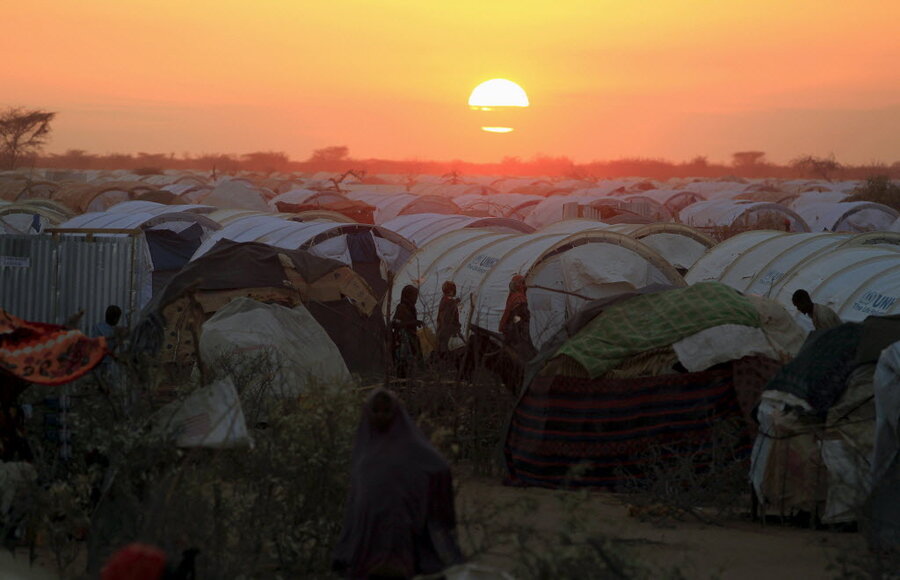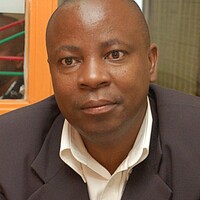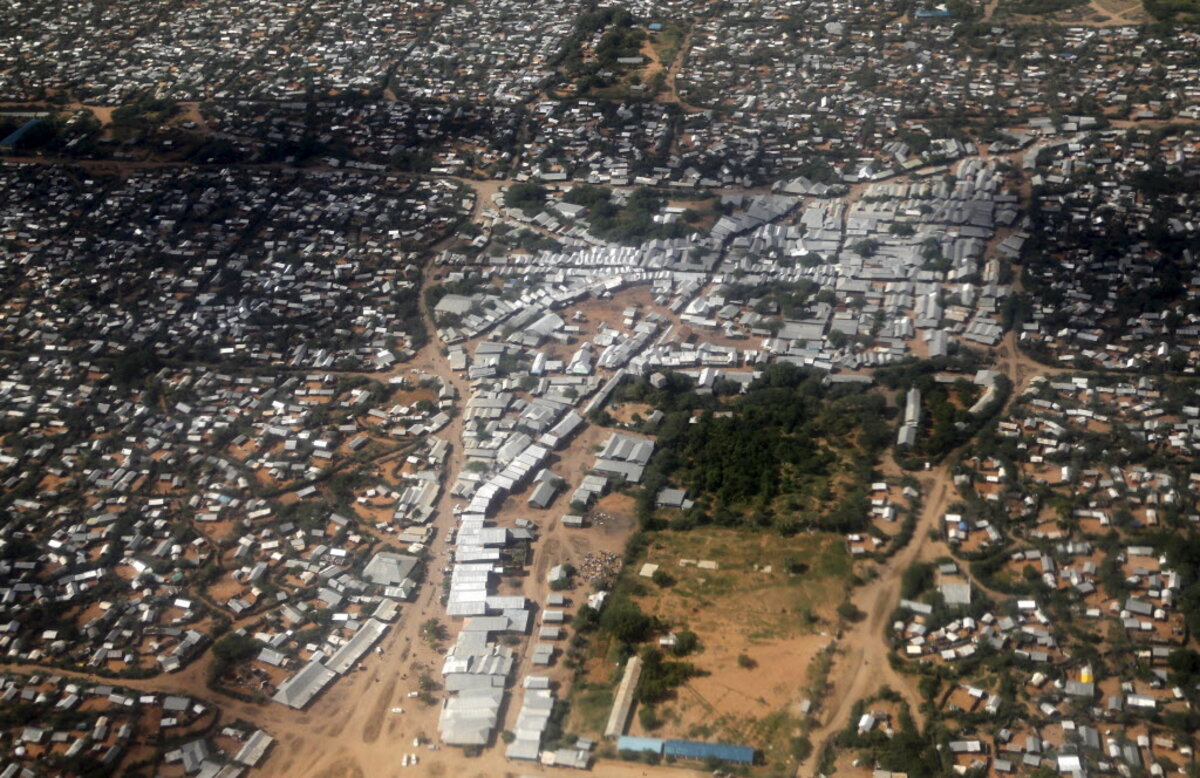Tale of two Kenyan refugee camps raises concerns of prejudice
Loading...
| Nairobi, Kenya
When plans for a new refugee camp in Kenya’s northwest were announced last month, human rights activists here bristled.
The new camp, Kalobeyei, was welcome news: It will be built as an extension of another camp to accommodate the influx of South Sudanese refugees. But it comes amid Kenya's continuous threats to close Dadaab camp – a 24-year-old compound that has become world’s largest refugee settlement and is predominantly home to Somali refugees. The decision has ignited concerns both about discrimination against Somali refugees and Kenya's overall refugee policy.
“Both South Sudan and Somalia are wracked by conflict and abuses, but Kenya’s generous and commendable welcoming of South Sudanese refugees starkly contrasts with some officials’ threats to force Somali refugees back home against their will,” says Gerry Simpson of the Human Rights Watch Refugee Program.
Dadaab's sprawling four-camp complex has a population of 330,000 people – if it were a city, it would be Kenya’s 4th largest. The Somali refugees who live there either fled the breakout of civil war in Somalia in 1991 or trickled in as the country became a failed state.
But the Kenyan government has complained that the camp is now a recruitment center for the Somalia-based Al Shabab militant group. With the rise of attacks from the Al Qaeda-linked terror group, calls have increased to close the camp – reaching a fever pitch after 148 students were killed in the Garissa University attack in eastern Kenya in April.
Until last year, Kenya played host to the largest number of refugees in Africa, a title now claimed by neighboring Ethiopia. Kenya is often praised for its open-door policy to refugees from other conflict-ridden East African countries, but that perception is changing.
“I think the priority of the government is wrong. It cannot keep threatening to close one camp, while opening another for a group of refugees. That is not good. It should treat all refugees equally,” says Sheikh Abdullahi Salat, the chairman of the Supreme Council of Kenya Muslim (SUPKEM) in Garissa County, where Dadaab is based.
Thorn in the flesh
The government backtracked on its threats somewhat after meetings with the United Nations in the past few months, but some experts say it’s just a matter of time before the calls rekindle – usually after an attack. Officials have denied that the government’s policy to refugees has changed. Instead, they say that security concerns surrounding Dadaab, located in Kenya’s northeast near Garissa, have forced their hand.
“I think the mulling over closure is propagated by a lack of a security strategy in the camps to include refugees in community policing,” says Andrew Maina, a program officer at the Refugee Consortium of Kenya (RCK), the agency charged with overseeing rights of refugees within Kenya’s borders.
“I think the government has given up on Dadaab, rather than engage its inhabitants on making the camp safe,” he adds.
Human rights groups say there is no evidence linking refugees to the attacks, since none have been prosecuted or convicted. These include the four Garissa gunmen Kenyan security forces reportedly killed.
But Heron Komen, acting Kenyan Commissioner of Refugee Affairs, says the camp has become a thorn for the Kenyan government over the years. “We would like to see the refugees leave in masses, but we cannot just close the camp at once. I think we have to find a balancing act,” he says.
Somalis throughout Kenya have long complained about prejudice that has increased since the rise of Al Shabab. And refugees in Dadaab complain that the threat to close it creates a sense of insecurity within the camp.
“We feel discriminated against when they want to close the only home we know,” says Mohammad Bashir by phone from Dadaab. He first came to the camp in 1991 as a two-year-old. He is now married, with five children, all born there.
“We can’t go back to Somalia,” he says. “If they finally close it, I’ll move to the next camp."
Influx of South Sudanese
The new “refugee city”, Kalobeyei, will be an extension to Kakuma camp, which was first opened in 1992 to accommodate civil war refugees from then-Sudan. But the 18-month civil war that has overcome the four-year-old South Sudan has brought a new flood of refugees. Since the civil war began in 2013, 46,235 new South Sudanese asylum seekers have arrived at Kakuma camp bringing its population to 184,527, the UN reports.
With up to 150 refugees arriving every day, and no end to the civil war in sight, Kalobeyei will be able to hold an additional 88,000 people.
“The planning for the camp is in progress,” says Emmanuel Nyabera of the United Nation High Commission for Refugees. He could not confirm the exact date the camp will open, though Mr. Komen predicts it will happen by the end of July.
Similar circumstances
Here in Nairobi, where 657 South Sudanese and 32,694 Somali refugees reside, both camps feel far away. Alfred Teah, among the new arrivals from South Sudan, says Kenya should leave Dadaab open.
“They are facing the same circumstances. They have been uprooted by war,” he says, sipping coffee in a cafe. He arrived in Nairobi earlier this month.
But Tut Mai Nguoth, another South Sudanese who has lived in Nairobi for about 20 years, is less forgiving. “There has been trouble anywhere the Somali refugees settle. I think Kenya is right to close the camp,” he says.
Mr. Salat of SUPKEM says that once there is peace in Somalia, many Somalis will leave willingly. “For now, it is the responsibility of the government to monitor and protect the innocent refugees residing in the camp.”







